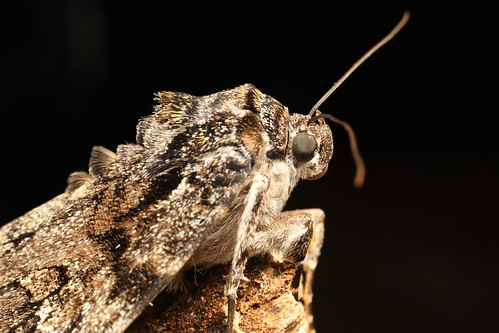Ddim yn wyfyn anghyffredin, ond un nodedig yr olwg. Dyma catocala ilia (Erebidae) ((gynt Noctuidae)), ac mae'n bwydo ar lond llaw o Oaks. Daeth i'm golau dros y penwythnos yn Ne Illinois, i lawr yn y Trail of Tears State Forest. Fel gyda chymaint o wyfynod eraill, mae gan y rhywogaeth eang hon nifer o amrywiadau a all fod yn wahanol – tra'n aros am fonograff o'r rhywogaeth…
Rwyf bellach wedi bancio llond llaw o ddelweddau gwyfynod neis felly disgwyliwch fwy o wyfynod dydd Llun! (er mai gwyfyn dydd Gwener yw hwn).


How can I resist a post title such as yours? A monograph? Whom, pray-tell, might be publishing such a useful work? =)
Ignoring the otherwise very moth-y appearance of your highlighted moth, in isolation, it’s antennae would certainly have me scratching my head when going through my VERY crude “moth-or-butterfly” examination. Felly,, are the tips of the antennae the same width as the rest, generally, no bulb or some such? And feel free to edify if I’m off base. =) I know if I see feathered I think moth, and if I see a bulb or other larger-then-rest-of-antennae blob at the terminus, I think butterfly. Can you clarify/correct/confirm that and apply to this individual?
Diolch, and looking forward to subsequent posts.
ugh, WHO, not whom. pardon. =)